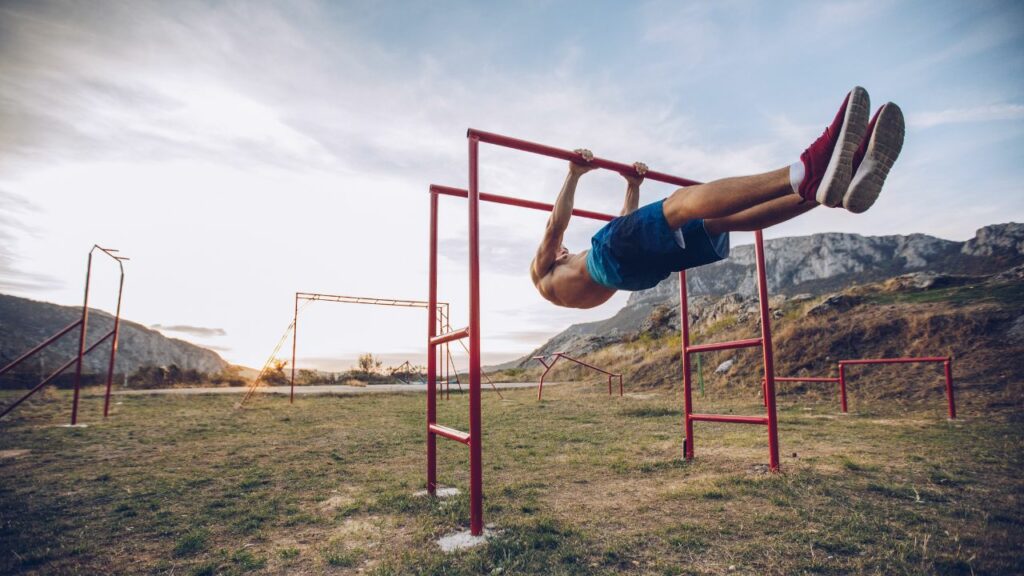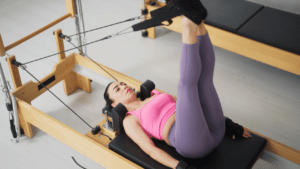
Calisthenics, when mentioned, may evoke black-and-white images of military-style jumping jacks, push-ups, and other basic exercises that were commonly used in physical education classes. While these simple movements are indeed part of the calisthenics family, the truth is that this type of bodyweight exercise goes far beyond the traditional moves that many of us associate with it. And although calisthenics is one of the oldest and simplest forms of exercise, it’s having a bit of a renaissance. Not only has calisthenics become an integral part of the modern home gym experience, but its popularity has skyrocketed with the success of fitness classes such as HIIT, boot camp, and suspension training—all built around this classic style of exercise.
This blog post will delve into the world of calisthenics, exploring its many benefits, different types of exercises, and how you can get started incorporating this form of training into your fitness routine. Whether you’re a seasoned fitness enthusiast or just getting started, you’ll find something to love about calisthenics.
What is Calisthenics?
Calisthenics is essentially resistance training with your body weight—think traditional moves such as push-ups, pull-ups, squats, lunges and planks. It is designed to improve strength, flexibility, agility, balance, coordination, and aerobic conditioning. Essentially, it helps you develop every skill you need to be a functionally fit human being. For that reason, calisthenics is also referred to as bodyweight functional training. By doing functional exercises, you can practice movements that are similar to the way your body normally moves. But calisthenics is more than just functional training; it can be as challenging as you make it, offering an intense full-body workout that can help you build strength and burn calories.
History of Calisthenics
Calisthenics is one of the oldest forms of exercise, and it’s no wonder why—it requires little or no equipment and involves basic movements. Its origins can be traced back to ancient Greece, where it was a fundamental part of their culture and education system. The term calisthenics comes from the Greek words “kállos” meaning beauty and “sthenos” meaning strength. The Greeks believed that physical exercise was essential for maintaining a healthy body and mind, and calisthenics was a key part of their daily routines. It included various bodyweight exercises such as jumping, running, and gymnastics. Although the name calisthenics originated in Greece, there is evidence that this physical fitness practice was also employed in Ancient China. In fact, calisthenics (along with a healthy diet) was prescribed by Chinese physicians as a way to preserve good health.
But calisthenics really gained popularity in the modern era with the rise of gymnasiums in the 19th century. These were institutions where people could go to exercise, learn new skills, and socialize with others who shared their passion for physical fitness. Gymnastics was a popular activity in these gyms, and calisthenics was often incorporated as a warm-up or a way to build strength and endurance.
Today, calisthenics remains a popular form of exercise that can be done anywhere, without the need for equipment or a gym membership. It has evolved to include a wide variety of exercises and training techniques, but its roots in ancient Greek culture are still evident in the focus on natural body movements and strength building.
Benefits of Calisthenics Workouts
Calisthenics offers a wide range of benefits for people of all ages and fitness levels. Here are just a few of the most important ones:
- Convenience: Calisthenics requires no equipment, which means you can do it anywhere and anytime. It’s the perfect minimalist home gym exercise.
- Ideal Exercise for Home Gyms: If you don’t have a lot of space or money for a gym membership and equipment, calisthenics is the perfect choice for a home workout.
- Low-Impact: Unlike weightlifting, calisthenics is a low-impact form of exercise, which means it puts less stress on your joints and reduces the risk of injury.
- Full-Body Workout: Calisthenics exercises work multiple muscle groups simultaneously, which means you can get a full-body workout in a relatively short amount of time.
- Can Be Done Anywhere: Calisthenics is a great option for people who are always on the go, as it requires no equipment and can be done anywhere.
- Improved Cardiovascular Health: Calisthenics exercises increase your heart rate and help improve your cardiovascular health.
- Increased Flexibility: Calisthenics exercises involve stretching and moving your body through a full range of motion, which can help increase your flexibility.
- Expressive and creative form of exercise: Since calisthenics is all about mastering control over lifting and moving your body, it can be a more expressive and free-flowing exercise that borders on artistry, like you see in acrobatics and gymnastics.
- Improves Brain-Body Connection: Calisthenics exercises require you to focus on your movements and coordinate them with your breath, which helps improve the connection between your body and brain.
- Improves Functional Fitness: As mentioned previously, calisthenics is a form of functional training that helps you develop strength and mobility in ways that mimic natural body movements.
Examples of Calisthenic Exercises
Beginner Calisthenics Exercises
Now that we’ve talked about the benefits of calisthenics, let’s take a closer look at some of the most popular exercises:
- Push-Ups: This classic exercise works your chest, shoulders, and triceps. To perform a push-up, start in a plank position with your hands directly under your shoulders. Lower your body until your chest nearly touches the ground, then push back up.
- Pull-Ups: This exercise targets your back and biceps. To perform a pull-up, grab a bar with your palms facing away from you and pull your body up until your chin is above the bar.
- Squats: This exercise targets your legs and glutes. To perform a squat, stand with your feet shoulder-width apart and lower your body until your thighs are parallel to the ground, then stand back up.
- Lunges: This exercise works your legs and glutes. To perform a lunge, step forward with one foot and lower your body until your front thigh is parallel to the ground, then step back up.
- Planks: This exercise works your core muscles. To perform a plank, start in a push-up position and hold your body in a straight line for as long as you can.
Advanced Calisthenics Exercises
Once you’ve mastered the basics of calisthenics, you can start to add more challenging exercises to your routine. Here are some advanced exercises you can try:
- Hanging Leg Raises: This exercise works your core muscles. To perform a hanging leg raise, hang from a bar with your legs straight and lift them until they are parallel to the ground.
- Burpees: This exercise works your whole body. Start in a standing position and lower your body into a squat. Put your hands on the floor, kick your feet back into a plank position, quickly jump them back to the starting position, and stand.
- Pistol Squats: This exercise targets your legs and glutes. To perform a pistol squat, extend both arms forward and raise one leg so it’s a foot off the ground. Now slowly lower into a one-legged squat and return to starting position.
- Muscle-Ups: This exercise targets your chest, back, and arms. To perform a muscle-up, hang from a pull-up bar with your palms facing away from you and pull your body up until you can press yourself above the bar.
- Handstand Push-Ups: This exercise works your chest and shoulders. To perform a handstand push-up, kick up into a handstand against a wall and lower your body until your head touches the ground.
How to Get Started Doing Calisthenics?
If you’re interested in getting started with calisthenics, there are a few things to keep in mind.
- Start slowly and focus on proper form: Since calisthenics exercises rely on using your own body weight, mastering your movement and body control is key to progressing. It will also help prevent injuries.
- Progressive overload: To build strength, it’s important to gradually increase the difficulty of your exercises over time. As you progress, try adding more repetitions or sets, as well
- Find a calisthenics workout plan that works for you: There are many resources available online, from beginner to advanced workout plans. Finding the right plan will also help you stick to a routine.
- Stay motivated: There are many calisthenic instructors on social media that are great for motivation. Many online groups will also share tips and what they find most rewarding or challenging about an exercise.
- Be creative: As you advance in calisthenics, you can also stay motivated by being creative. Be watching for “what’s next.” Because calisthenics can be a free and expressive form of exercise, you see inspiring examples of people challenging themselves everywhere. Get inspired by street workouts and urban calisthenics, find a calisthenics park, plan the perfect calisthenics corner at your home gym, or get outside and find a playground.
- Track your progress: Keeping track of your gains is also helpful. It can be easy to get discouraged when you’re not seeing results right away, but with patience and persistence, you’ll see improvement over time.
- Have fun: There are lots of ways to exercise, but calisthenics is a way to change up your routine while still challenging yourself, so enjoy the process and celebrate your successes along the way.



